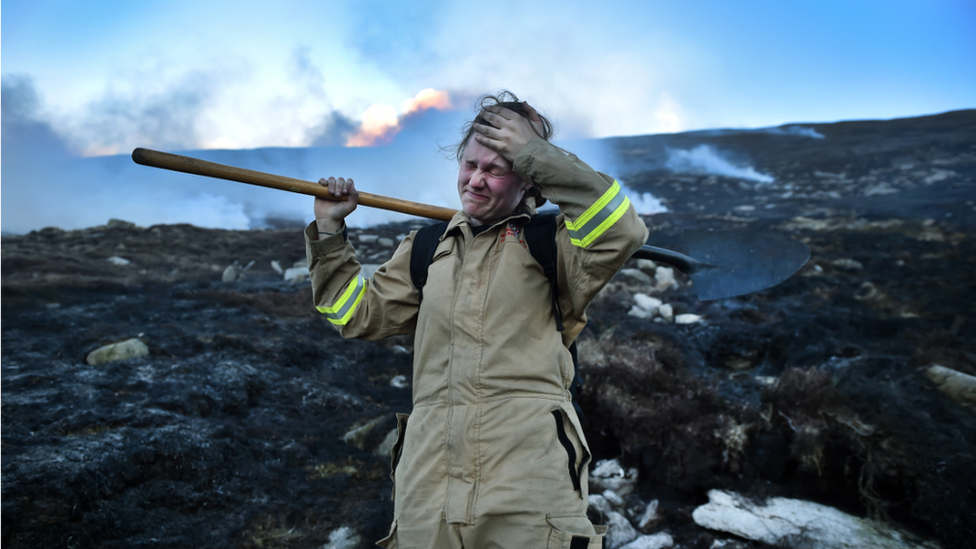Mourne Mountains: NIFRS records more than 1,000 wildfires since 2016
- Published
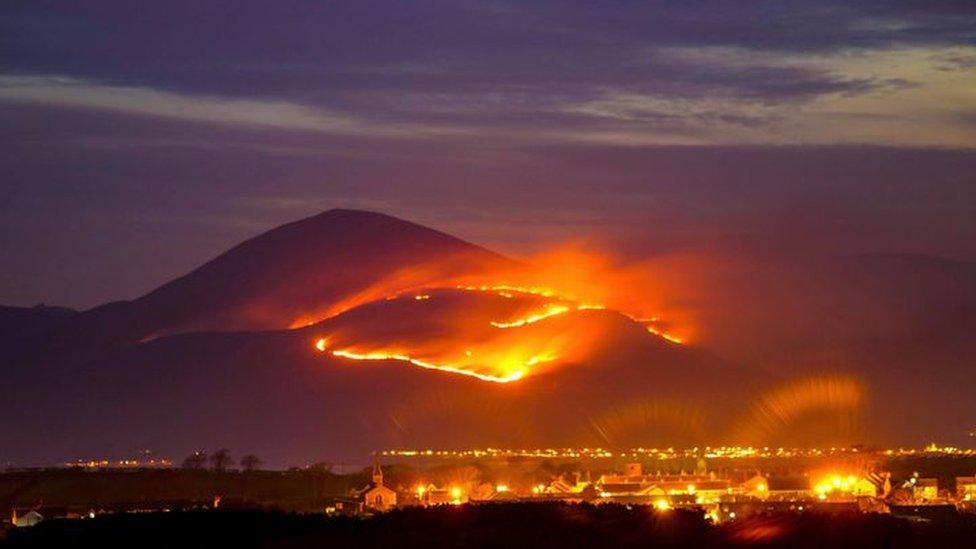
A large gorse fire blazed across the Mourne Mountains in April
There have been more than 1,000 wildfires in the Mourne Mountains over the last five years, Northern Ireland Fire and Rescue Service (NIRFS) figures show.
That is small, large and everything in between.
Like the fire on Slieve Donard in April, it is believed that more than 90% of them were started deliberately.
More than 1,000 wildfires in Mournes since 2016
Farmers and vandals are often blamed for starting such fires but a definitive cause is seldom given.
"It could be any number of causes and those are certainly two of those," said Aidan Jennings, NIRFS Assistant Chief Fire and Rescue Officer.
"For the most part, we find that those fires are started deliberately and that has been our experience over many years."
A breakdown of the NIFRS figures, released under the Freedom of Information Act, highlights that of 1,012 Mournes wildfires between 1 April 2016 and 31 March 2020, a total of 932 were deemed deliberate.
Mr Jennings added: "A deliberate fire for us in terms of the wildfire environment, we look at the potential cause.
"We are in an area of outstanding natural beauty. We don't have causes that are immediate or obvious causes in that environment. People will talk about glass bottles and sun through and that can be the case but it is very unusual".
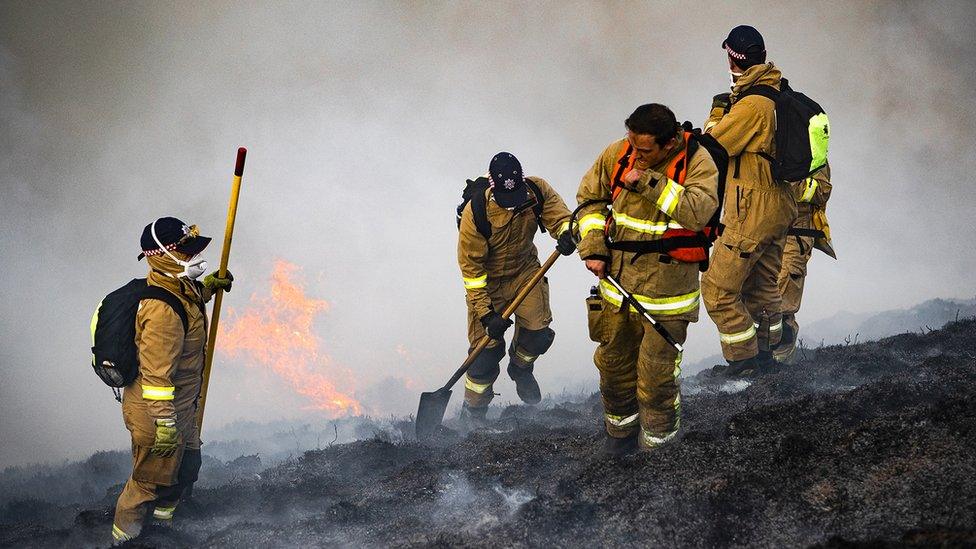
Fire crews were called out over 100 times in each of the years covered by the figures
The NIFRS figures show that each year had more than 100 call outs - but 2018/19 had by far the most with 377.
As regards geography, the data highlights which station responded first with Kilkeel (477), Newcastle (366), Rathfriland (86) and Warrenpoint (73) accounting for the overwhelming majority.
It is understandable that given the sheer number of call outs, it is only fires of scale or those in significant locations that make the news cycle.
But for many mountain lovers, regular walks in the Mournes uncover the aftermath of fresh fires causing fresh damage to a special landscape.

Vincent McAlinden has lived, farmed and hiked in and around the Mournes for more than 30 years.
He has taken me to a location near Kilkeel to show not just the number of fires in the area, but the damage they have done to the environment.
Our first stop is an area, spanning about one acre.
Mr McAlinden said it was burned in the same week as April's fire on Donard.
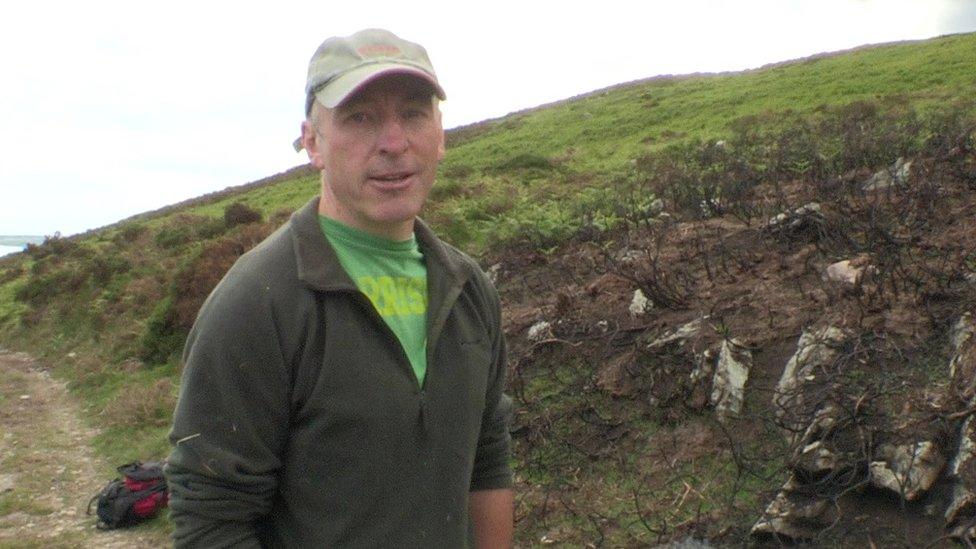
Vincent McAlinden says there has been significant damage caused to the environment
"We are certainly seeing hundreds and hundreds and hundreds of fires," he said.
"But it's the impact on the habitats, the impact on the soil, the impact on the water, the impact on the air that we are breathing, the impact on the food we are eating.
"If you want people to look after these places and make them better for us all, to deliver clean air, clean water, to deliver the biodiversity, to deliver the mammals that we want to see in these places, to hold on to the carbon, then we've got to start an active management strategy."
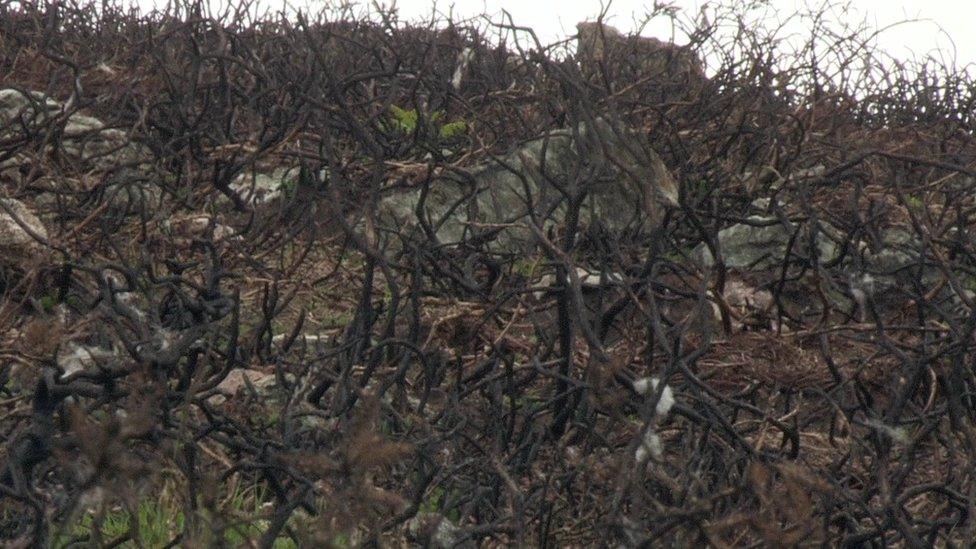
A Stormont-led recovery plan for damaged areas of the Mournes is expected to be finalised in the autumn.
Mountain lovers will judge its success on whether it can help prevent future fires - big and small.
- Published26 April 2021

- Published26 April 2021
